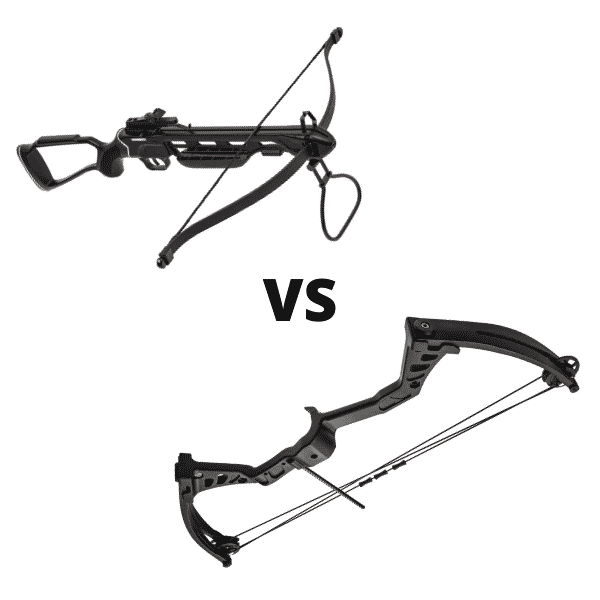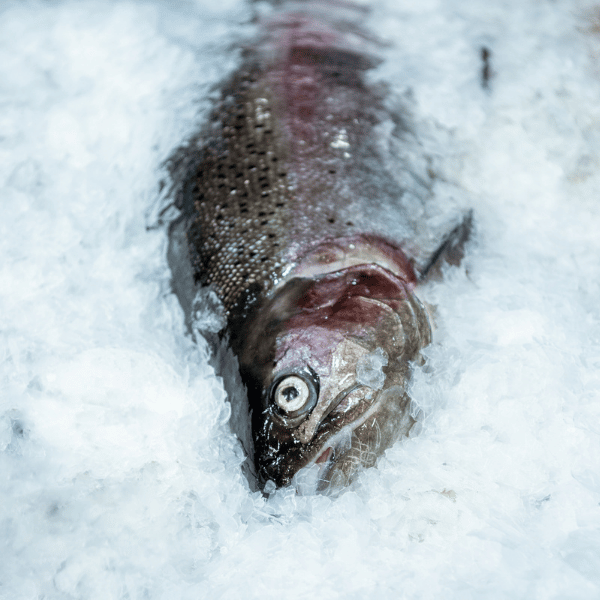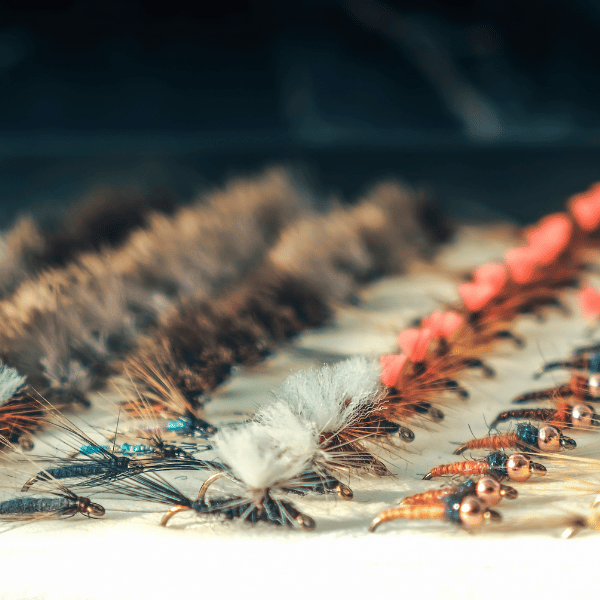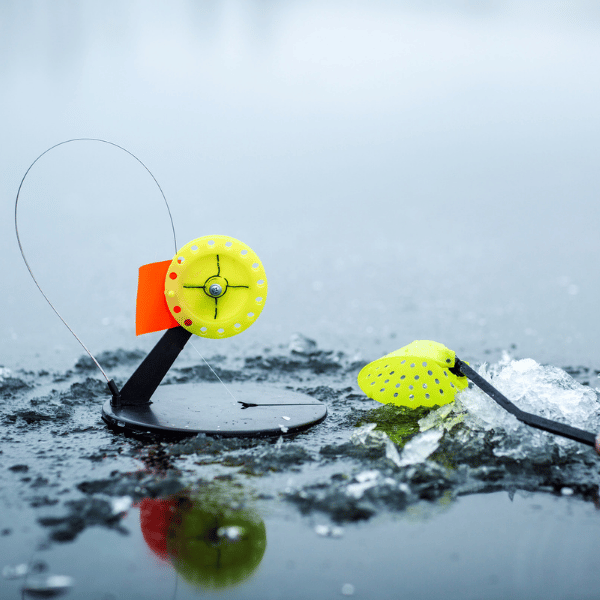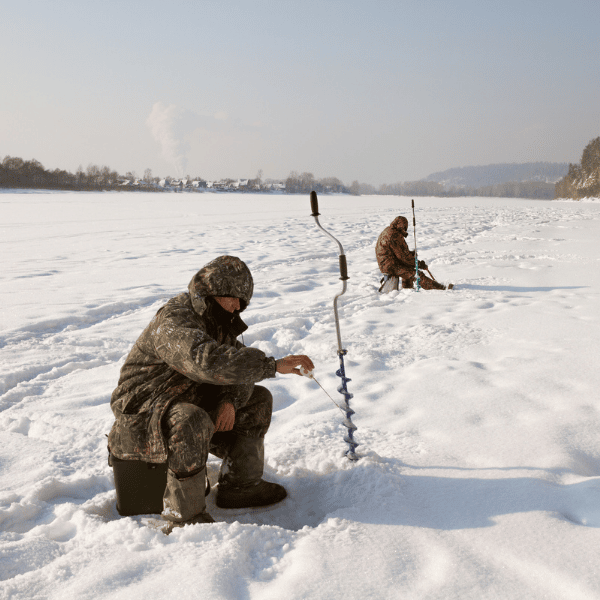How to Find Walleye Ice Fishing
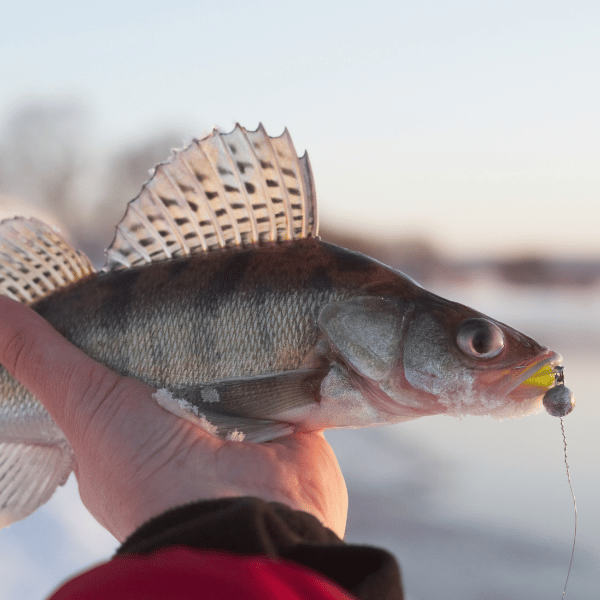
The key to walleye ice fishing is knowing where to look and what to do once you get there.
In this guide, we go over how deep to ice fish for walleye and where to find walleye ice fishing to help you start to catch walleye more consistently.
Contents
Finding Walleyes Ice Fishing

Walleye are very active fish all year long, even when they are under the ice. Knowing their habits and when they like to move will really help you narrow down where they are hanging out.
Some locations will be obvious first places to check out, while you might have looked over others where some incredibly large walleyes might be hiding. It all depends on the time of the season and weather conditions.
So let’s dive into where to find walleye ice fishing so you can catch more walleye and potentially a trophy walleye to get mounted.
Where to Find Walleye Ice Fishing
Walleye generally like to hang out in rougher terrain bottom areas with lots of structure. Humps, saddles, and rocky terrain in 10 to 30 feet of water are ideal for ice fishing walleye.
In general, walleye can be found all across the United States and most of Canada in both lakes and rivers. Thanks to stocking programs, walleye have been introduced into the Atlantic Coast drainages that move from Vermont to South Carolina. Other than California, many western states are rife with walleye.
During the early part of the walleye ice fishing season, walleyes will still be relatively settled in their current waters. Heading into the middle of ice fishing season, walleye travel deeper to chase warmer water. Toward the end of the season, walleye head to spawning areas such as shorelines and pressure ridges.
Walleyes are very intelligent creatures. You’re going to need to know a lot more than just their typical locations if you want to be successful in ventures. It’s important to learn what kind of colors attract them more than others, the types of lures that yield the best results, and their favorite food.
Combining your knowledge of walleye ice fishing gear with their normal walleye habits in winter will help you on the ice.
How to Find Walleye Ice Fishing
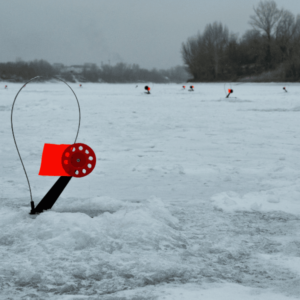
You first want to make sure that the water you are fishing in is deep enough to support successful walleye ice fishing. Many lake structures can be too shallow for walleye, causing them to roam and not relate to their surroundings.
This can be challenging for ice fishing as it is difficult to get the walleye into a routine. As such, you may want to avoid lakes that are very shallow throughout. If you don’t have any other options, it is best to get a map ant look for any pockets of deeper water or breaks.
Start punching your holes along the break and fish from there. Just be cautious of any thinner ice that may be in this area.
Continue to search for the deeper bodies of water. You will likely have a lot more success here, as the walleye will have a better environment to swim in.
I would recommend instead of confining yourself to one small area, drill holes in a line across the lake spanning over the deep and structured areas you want to fish. This will give you more opportunity to hop from hole to hole searching for walleyes.
While doing this, make sure to use different walleye ice fishing lures, jigs, and bait to figure out the best combination of these with the area that particular lake, the water clarity, weather conditions, and the time of day you are fishing.
How Deep to Ice Fish for Walleye
In stained water and snow-covered ice, ice fishing for walleye can be best at 8 to 12 feet deep. However, if walleye ice fishing on clear ice, clean water, and a bright sunny day increase your depths to around 10 to 20 feet deep as walleye do not like bright, direct sun.
With that being said, it’s important to know the general activity in the lake you are fishing. Walleyes can still be very active swimmers in waters as shallow as 2 feet, depending on the ice, weather conditions, and time of the season.
For best results, however, you may want to start around depths in the 20-foot range. For many ice fishers, these depths have proven to be incredibly productive for walleye ice fishing. If found at this depth, walleye will be very active, curious, and hungry. With the right lure, you can be very successful.
Remember to test your various lures, baits, and jigs to see which ones will net you the best results. You will likely have to switch things up a bit across the water, but you should find that one works better than the other.
You won’t be able to rely on the same method for other bodies of water, though, so don’t get too comfortable with the combination you are using.
Best Time of Day to Ice Fish for Walleye
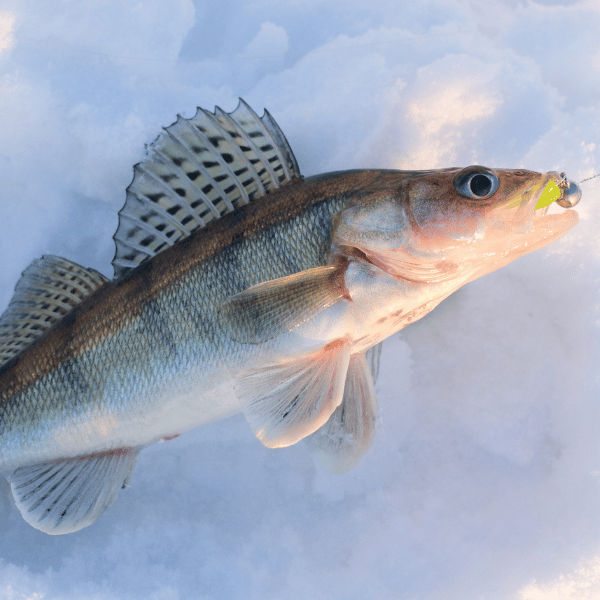
Walleye are the most active and hungry about an hour before dark. Starting to ice fish as early as 3 hours before dark all the way to dusk is the best time of day to ice fish for walleye.
The condition of the water is also going to play a big role in the time of day you will want to ice fish for walleye. So let’s dive into the different water conditions and how they affect the time of day you will probably want to fish.
Stained Water or Snow Covered Ice
If you are fishing on a stained lake, for instance, you are better off walleye ice fishing in low-light conditions. Walleye will be more productive in these waters when there is less light available.
You may also find that you have better results when you wait to fish when it is more toward the evening. As previously mentioned, just an hour or so before it gets dark can dramatically increase your chances of catching walleye more consistently.
Many ice fishers prefer the evening more than they do the morning. However, walleyes tend to stop feeding in stained waters just after it gets dark. As such, you may find the wee hours of the morning to be uneventful, at best.
Clear Water or Clear Ice
When ice fishing on a clear lake, you will probably want to wait until after dark to ice fish specifically for walleye. With the cover of night on your side, walleyes will tend to feed all through the night if the water is clear enough.
Under the right conditions and by choosing the best timing, you can clean up rather well for yourself. Just keep in mind that different areas yield different results.
Choosing Different Baits
Walleyes absolutely love minnows, so you may even want to consider using live bait. The minnow will attract the walleye in great numbers in most cases, whether you are jigging or deadsticking.
If the lake you are walleye ice fishing on allows it and will let you use two fishing lines, consider using a single line for jigging and the other line as a dead stick. Oftentimes, your jig will serve to get the walleye’s attention and get them close enough to your dead stick.
On the dead stick, use a pinched minnow head as an alternative for the walleye to choose from. If the live bait on your jig isn’t doing the trick and the walleye simply isn’t as active as you would have hoped, the dead stick will ideally be enough to get the walleye to bite.
Walleye Ice Fishing Lure & Bait FAQ
Once winter hits and the water gets cold enough, walleye will swim to deeper, warmer waters. Depending on how deep the lake is, walleye can be found anywhere from 20 to 50 feet in winter months.
Heavy rain can be one of the best times to go walleye fishing. The day it is raining and a couple of days following a heavy rain will make the walleye become more active, resulting in more walleye passing by your bait. This will essentially increase your odds of catching walleye.
Sunny day ice fishing can be ok as long as there is snow covering the ice and blocking the sun from penetrating the water too much. However, if there is little to no snow on the ice, the sun will penetrate through the water causing walleye to become a little less active.
If there is no snow on the ice and the sun is penetrating into the water, you will most likely have a better chance of catching walleye from about an hour before sunset and into the night.
Late March and into April is the best month to catch walleye ice fishing as they are becoming more active in preparation for the spawning season. When walleye are spawning, they will become more active requiring them to eat more. They will also head to more shallow waters around the shoreline to spawn.
